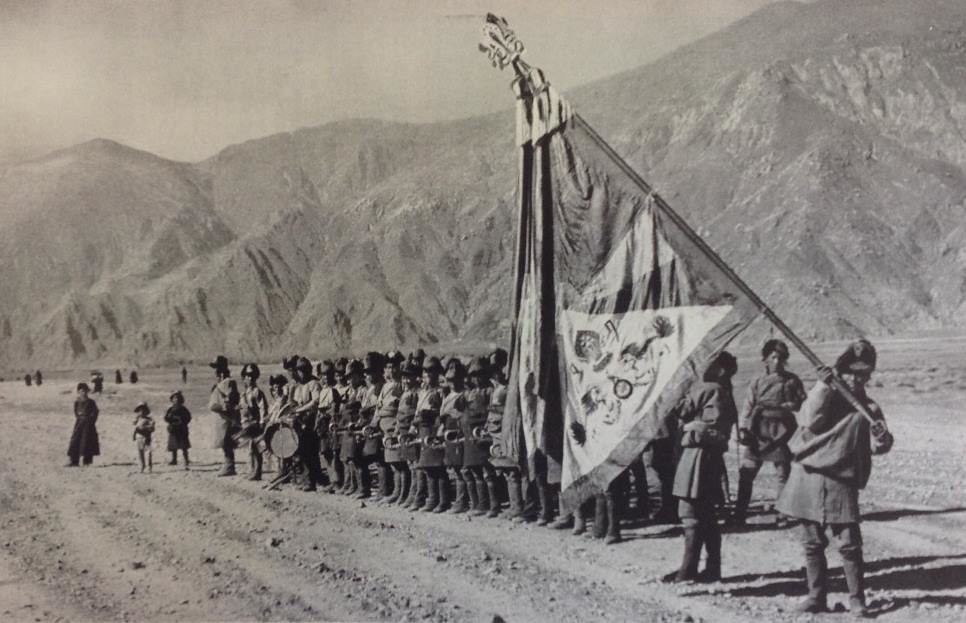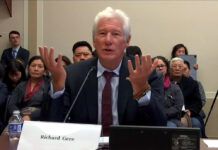Ben Byrne* wonders whether Tibet before the Chinese invasion took place would have accepted a possible American support with conditions whose full range of consequences could not have been foreseen at that time and whether, if ‘yes’, the Tibetan people would then have met a fate akin to that of the Marshall Islands inhabitants.
(TibetanReview.net, Aug23’20)
In 1947, at the height of global U.S. post-war hegemony, George Merrell, the U.S. charge d’affaires in New Delhi, sent a report on Tibet to President Harry Truman. Tibet, Merrell wrote, was a land of “inestimable strategic importance” because of its location “in a central continent threatened by Soviet expansionism.” Merrell posited that the conservative and religious nature of the Tibetan people would help them to “resist Soviet influence and other disruptive forces longer than any other Asiatic people.” If the Tibetans were to enlist American help in their struggle, however, Merrell suggested that they should be made to pay a significant price: The obligation to be an American military base for air and rocket-launching operations. He added that the Tibetan plateau, “in an age of rocket warfare, might prove to be the most important territory of all Asia.”
This suggestion by Merrell would obviously be anathema to Tibetan Buddhists, who pride themselves on being a people of peace. A monastery would look incongruent next to an American military base primed to unleash a destructive force akin to that which had caused the skies to explode and human beings to melt in Hiroshima and Nagasaki on those world-shattering days in August 1945. However, the response from Merrell’s colleagues at the U.S. State Department hinted at an even darker fate for Tibet under American stewardship: Tibet offered “great waste areas” rendering it a useful spot in which “rockets could be tested,” it read.
Over three decades later, in 1983, Darlene Keju, a Marshall Islander from the middle of the Pacific Ocean, took the stage at the Pacific Plenary of the World Council of Churches in Vancouver, Canada. Keju spoke of various health problems plaguing the people of the Marshall Islands, “we have hundreds of women who have miscarriages, we have leukaemia cancers, we have thyroid cancers, we have still-birth babies… we have babies we call ‘jelly-fish’ babies, a baby is born on a labour table and it moves up and down like this (Keju moves her hand up and down, imitating the movement of a jellyfish on the water), it’s kind of an ugly thing and it’s not shaped like a human being, it moves up and down like this because that thing is breathing.”
Tibet may have slipped through their fingers after the Chinese invasion of 1950, but the Americans still had their “great waste area.” The health defects listed by Keju were caused by the detonation of 67 nuclear bombs on, in and above the Marshall Islands by the United States government between 1946 and 1958. A dozen biological weapons tests, including an experiment with aerosolized bacteria designed to kill enemy troops, were also conducted on the islands. To this day, Runit Dome, constructed by the United States on Enewetak Atoll, holds more than 3.1 million cubic feet of U.S. produced radioactive soil and debris, including lethal amounts of plutonium. Locals refer to it as “the Tomb.”
Nerje Joseph was a 7-year-old witness to the largest thermonuclear bomb detonated by the United States, nicknamed the Castle Bravo detonation, in 1954. She recalls waking up that morning on Rongelap Atoll, 100 miles east of the blast on Bikini Atoll. The sun rose as usual in the eastern sky, dancing on the tropical lagoon near her home. Then, curiously, there was a second sun rise in the west. “It lighted up the horizon, shining orange at first, then turning pink, then disappearing as if it had never been there at all.” Joseph and her fellow islanders had no idea what they had just witnessed, but hours later the radioactive fallout from Castle Bravo descended on their island home like snow. It contaminated their skin, water and food. By the time the people of Rongelap were evacuated by U.S. authorities they were suffering from acute radiation poisoning. Their hair fell out in clumps; their skin lost its integrity and began to weep, slipping of their bodies in huge pieces; they vomited uncontrollably.
Two years later the United States Atomic Energy Commission regarded the Marshall Islands as “by far the most contaminated place in the world.” This, however, didn’t stop the evacuated residents of heavily contaminated Rongelap Atoll being resettled on their islands in 1957 by U.S. authorities. The U.S. government viewed this premature resettlement as a good opportunity to study the impact of radiation on human bodies. The Marshallese, according to the US Atomic Energy Commission, were “uncivilized, but more like us than mice,” making them interesting subjects for experiments. In 1963 the studies started to b1ear fruit as the first thyroid tumours began to appear in the residents of Rongelap. By 1976, 69% of the children who were under the age of ten at the time of Castle Bravo had developed thyroid tumours. In 1984 the US denied the request of Marshall Islands Senator Jeton Anjain to evacuate the islands of Rongelap. A year later, the Rainbow Warrior, a Greenpeace boat, evacuated the residents to Kwajalein Atoll.
The Marshall Islands gained independence from the United States in 1986. They had paid their debt to the Americans who had liberated them from the Japanese in 1944 by sacrificing their health and their culture. Only one island of the sixty that comprise Rongelap was decontaminated by U.S. authorities before the handover of sovereignty. Today, the Marshall Islanders are still waiting for $2 billion worth of compensation the United States government owes them in accordance with a ruling by the Nuclear Claims Tribunal. Due to the continuing high levels of radiation, many Marshall Islanders still live in exile, “too fearful to ever go back because of nuclear contamination.” In a report to the UN human rights council in 2012 special rapporteur Calin Georgescu said that “near irreversible environmental contamination” existed on the Marshall Islands and that many residents continued to face “indefinite displacement.”
For centuries Marshall Islanders had cultivated plants and eaten shell fish. They were skilled boat-builders and navigators. They had formed a society bound by family association and tradition. Like their Tibetan contemporaries on the Roof of the World, these islanders lived a largely isolated existence that was forcefully interrupted by the invasion of foreign imperial powers. Since the middle of the twentieth century, the Marshall Islanders and the Tibetans have suffered in parallel, the former under the American imperialists, and the latter under the Chinese communists. As the communication between Merrell and the US State Department shows, their fates could have been even more closely entwined.
—
* Ben Byrne has a master’s degree in History and is an independent researcher.







